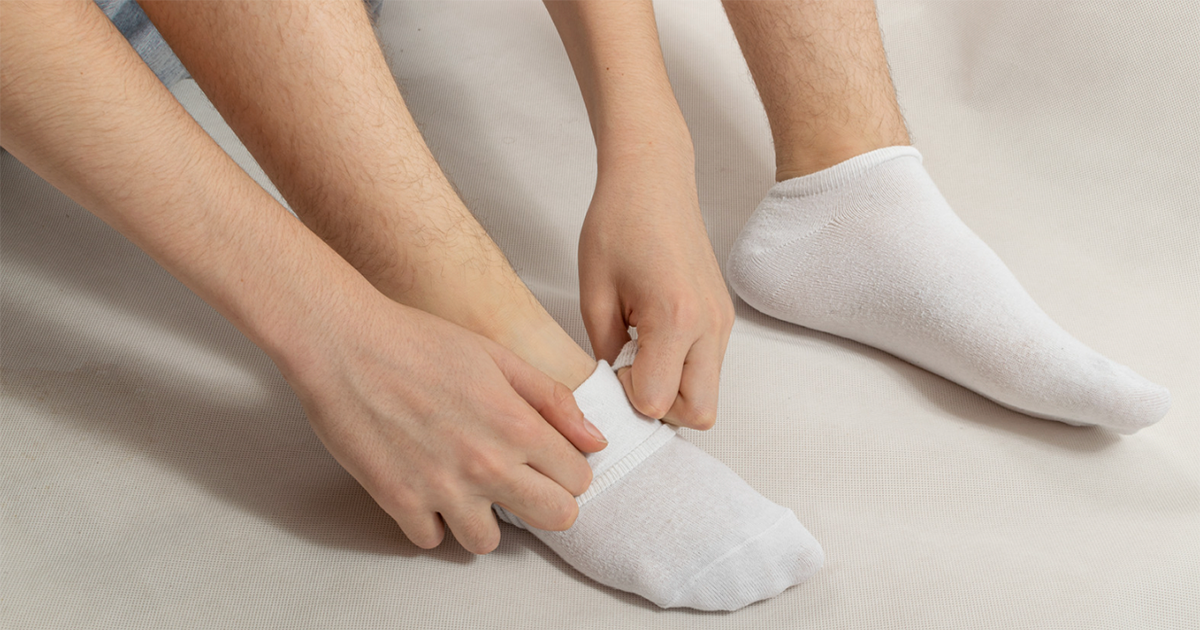Athlete's Foot Not Just a Locker Room Problem
August 27, 2024 •Podiatry Associates of Indiana

The itching and scratching can happen at the worst times - attending a business meeting, having dinner with friends or sleeping at night.
Athlete's Foot can be annoying, aggravating and painful. And, despite its name, this condition isn't limited to athletes.
Your feet can come into contact with the fungus in many places - most often when walking barefoot at swimming pools, locker rooms and public showers. The fungus also can travel between people when towels, shoes or socks are shared. Understanding the symptoms and treatment options is key to managing and preventing athlete’s foot.
Recognizing Athlete's Foot
Athlete's Foot is caused by dermatophytes, a group of fungi that thrive in warm, moist environments. They primarily affect the skin on the feet, especially between the toes. Here are some common signs and symptoms:
- Itching and Burning: One of the first signs is persistent itching and burning between the toes or on the soles of the feet.
- Redness and Blisters: The skin may appear red and inflamed. In some cases, small blisters may form, which can be painful.
- Peeling and Cracking: As the infection progresses, the skin may start to peel and crack, leading to discomfort and an increased risk of bacterial infection.
- Dry, Scaly Skin: Chronic cases of athlete’s foot can cause the skin to become dry, scaly, and thickened, especially on the soles of the feet.
Causes and Risk Factors
Athlete’s Foot is contagious and can be spread through direct contact with an infected person or by touching contaminated surfaces. Here are some common risk factors:
- Walking Barefoot in Public Areas: Locker rooms, showers, and swimming pools are common places where the fungus can spread.
- Wearing Tight Shoes: Shoes that don't allow your feet to breathe can create a moist environment, perfect for fungal growth.
- Sweaty Feet: Excessive sweating can contribute to a damp environment inside your shoes, which is ideal for fungi.
- Sharing Personal Items: Using someone else's towels, shoes, or socks can increase the risk of infection.
Treating Athlete's Foot
Fortunately, Athlete's Foot is usually easy to treat. Effective treatment options include:
-
Over-the-Counter Antifungal Creams: Most cases of Athlete's Foot can be treated with topical antifungal creams, powders, or sprays. Ingredients like clotrimazole, miconazole, and terbinafine are commonly found in these products and are effective in treating the infection.
-
Prescription Medications: If over-the-counter treatments don’t work, a healthcare provider may prescribe stronger antifungal creams or oral medications.
-
Keep Feet Dry and Clean: Keeping your feet clean and dry is crucial. Wash your feet daily with soap and water, and make sure to dry them thoroughly, especially between the toes.
-
Wear Breathable Footwear: Choose shoes that allow your feet to breathe and socks that wick away moisture. Change your socks regularly if they become damp.
-
Avoid Sharing Personal Items: Don't share towels, socks or shoes with others, as this can spread the infection.
Preventing Athlete's Foot
Preventing Athlete's Foot involves maintaining good foot hygiene and taking precautions in public areas. Here are some preventive measures:
- Wear Flip-Flops in Public Showers: This can help reduce the risk of coming into contact with the fungus.
- Change Socks Daily: Wearing clean socks every day can help keep your feet dry and reduce the risk of infection.
- Keep Feet Dry: Use talcum powder or antifungal powder to keep your feet dry, especially if you are prone to sweating.
- Alternate Shoes: Give your shoes time to dry out before wearing them again, and consider having multiple pairs to alternate between.
When to See a Doctor
While Athlete's Foot can often be treated with over-the-counter medications, it's important to see a healthcare provider if:
- The infection is severe or doesn’t improve with self-care.
- You have diabetes, which can lead to complications.
- You develop a secondary bacterial infection, characterized by increased redness, swelling, pain, or pus.
Though uncomfortable and sometimes persistent, this is a manageable and preventable foot condition. By recognizing the signs early, adopting good foot hygiene and using appropriate treatments, you can keep this common fungal infection at bay.
If your Athlete's Foot symptoms persist or worsen, contact us to request an appointment.

